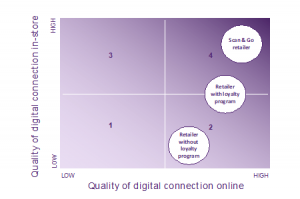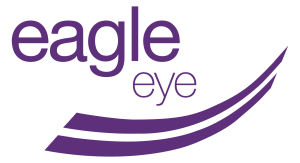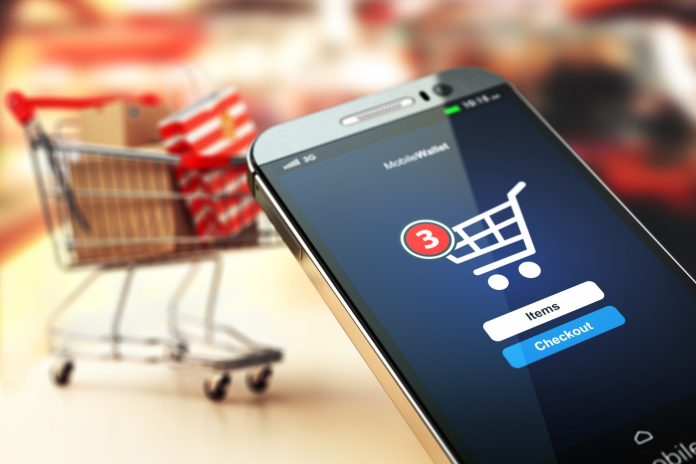
Scan-and-go is a relatively recent innovation. Customers add products to a virtual cart as they shop in a store, usually via an app on their phone, eliminating the need for team members to scan items at checkout.
By Eagle Eye General Manager APAC Jonathan Reeve.
Boosted by the Covid-driven trend of contactless shopping, scan-and-go has been steadily growing its share of grocery sales globally. In this article, I argue that most commentators miss the core reason scan-and-go will revolutionise retail – retailers’ ability to communicate with customers in real-time as they shop.
Amazon has led the way in scan-and-go with its Amazon Go store format, in which on-shelf sensors detect when a product is picked up and added to a customer’s digital shopping cart. Having first publicly trialled Amazon Go in Seattle in 2018, Amazon is rolling out the format to other states and countries.
In the UK, all the leading grocery retailers offer scan-and-go in some of their stores, while Marks & Spencer recently announced extending its scan-and-go app across its entire network. In addition to the customer service and efficiency benefits, Marks & Spencer also pointed to reduced crowding as customers no longer need to congregate at the checkouts.
In Australia, Woolworths recently increased its network of scan-and-go trial stores to Western Australia and Queensland and is believed to have around 25 stores offering this option. Last year, Coles also confirmed it was testing different models of contactless in-store shopping.
Although scan-and-go frequently attracts media interest focused on cost savings (from fewer team members serving in stores), I believe this efficiency focus misses the real revolution the model will bring about. Scan-and-go is built around a digital connection with customers using their smartphones to manage their physical shopping trips. And that gives the retailer an unprecedented opportunity to understand and influence every step of a customer’s journey around the store in real-time.
Why could a scan-and-go shopping trip be so disruptive? Consider loyalty programs, the primary tool brick-and-mortar retailers currently use to understand their customers. These programs are expensive, on average costing two per cent of sales. Retailers are willing to bear this cost because, in return, they acquire the customer’s identity and can build a 1:1 relationship. Brick-and-mortar retailers without a loyalty program may not even know the names of their highest-spending customers.
Scan-and-go achieves the nirvana of store loyalty programs
A customer using scan-and-go connects with the retailer in a completely different way. Scan-and-go involves changes to the traditional shopping trip, for example, using the smartphone to track purchases and eliminate the checkout.
However, the most disruptive element is the real-time digital connection the smartphone enables. Scan-and-go eliminates the need for a traditional loyalty program because the connection provides 100 per cent visibility of customer actions as they take place. And that there is the nirvana of store loyalty programs, opening up almost unimaginable levels of customer understanding and personalisation.
Consider this example:
- A traditional supermarket with a loyalty program can see I’m a dog owner and send me an email highlighting this week’s dog food promotions.
- A scan-and-go grocery retailer can see I’m a dog owner and that I just walked past the pet food aisle without buying any dog food… and then send me a personalised offer in real-time to encourage me to visit the pet food aisle before I leave the shop.
Can you guess which approach is more effective?
The strategic opportunity for traditional retailers
To understand the opportunity for traditional retailers, consider the quality of the digital connection retailers hold with customers shopping in the two main channels:
- The quality of the digital connection with customers shopping online.
- The quality of the digital connection with customers shopping in-store.
The revolutionary impact of scan-and-go on retailer marketing

Because any online store depends on a digital connection with the website, the retailer can always see precisely what products the customer has bought. In a physical environment, a retailer can’t see the products purchased in real-time. That’s why scan-and-go is a game-changer in this sense, as retailers now have a real-time digital connection and can see where the customer is in their journey around the physical store.
If we plot most retailers on the above matrix:
- Retailers without loyalty programs sit in the bottom-left of quadrant 2. These retailers can see what their online customers are doing at any point in time but have no information about their in-store customers.
- Retailers with a loyalty scheme can track in-store spend against a unique identity and communicate with customers before or after a visit, for example, by email. However, they have almost no digital options for interacting with customers when they are in the store.
- In the top-right sit retailers who have implemented scan-and-go. Because the retailer is digitally connected to the shopper through their smartphone, it can recognise each customer, wherever they are in their shopping journey, and respond with hyper-personalised communications in that specific moment.
The power of ‘now’ in retail
Scan-and-go is already growing strongly, but I believe it will truly take off in the next few years as retailers start capitalising on the opportunity to communicate with customers in their stores in real-time.
Eagle Eye CEO Tim Mason summarises the opportunity perfectly: “‘Near me’ search has been transformational for Google because it equals relevance. A connection now is the equivalent opportunity for retailers.”
With scan-and-go, just imagine what your in-store shopping experience could look like just a few years from now?
 About Jonathan Reeve and Eagle Eye
About Jonathan Reeve and Eagle Eye
Jonathan Reeve is General Manager APAC for Eagle Eye, a leading SaaS technology company transforming marketing by creating digital connections that enable personalised performance marketing in real time through coupons, loyalty, apps, subscriptions and gift services. Its customers in Australia and New Zealand include Woolworths Group and The Warehouse Group. Jonathan has worked in retail businesses on three continents for more than 20 years and is the author of Retail’s Last Mile: Why Online Shopping Will Exceed Our Wildest Predictions.


